How to Celebrate the New Year
Before the Festival
买年货 : shopping for the Chinese New Year (Spring Festival)
年画 : New Year prints (Chinese) printed in woodblock; watercolors/drawings of the Chinese New Year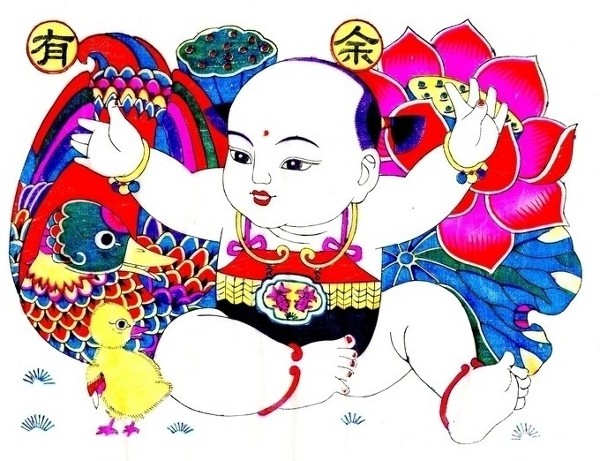
春联 : parallel sentences written on red paper in celebration of the Spring Festival; parallel verses to New Year's mottoes
贴春联 : pasting chunlian (parallel sentences on red paper) on both sides and above the door; parallel inscriptions affixed to the door of the main entrance of the house as a sign of happiness and prosperity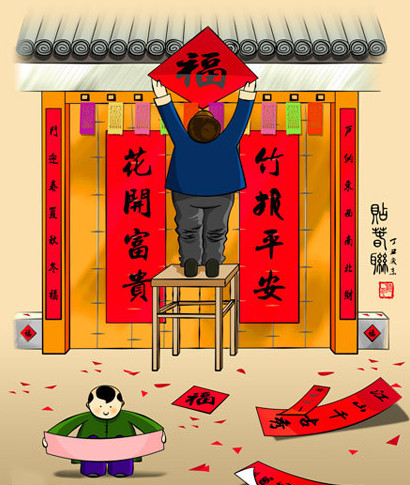
贴窗花 : decorating windows with paper cuttings; pasting paper cuttings on windows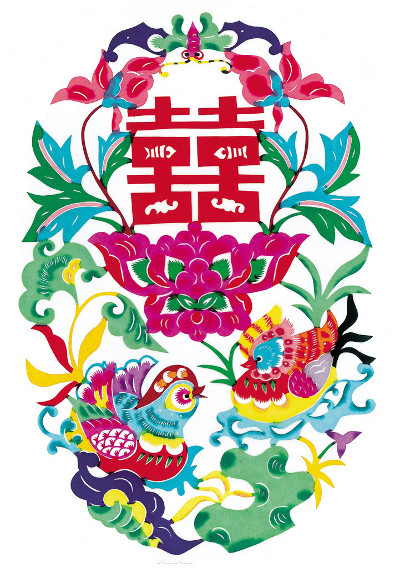
贴福 : affixing the character "福" (fortune/happiness/prosperity) to the door to express one's aspiration for a happy life and a better future.
倒贴“福”字 : pasting the Chinese character "福" upside down to signify "the arrival of prosperity," playing on the onomatopoeic effect of the two characters "倒" (upside down) and "到" (arrival).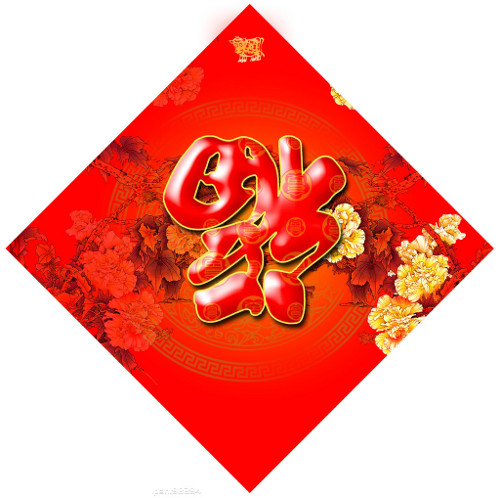
The Eve
辞旧迎新 : bidding farewell to the old year and welcoming the new year
祭祖 : ceremonies in memory of ancestors (ancestor worship)
年夜饭 New Year's Eve Dinner
The dinner on the eve of the Lunar New Year is very important. However, the meal differs by region. Northern Chinese eat dumplings shaped like a crescent moon (饺子 ). In addition to dumplings, noodles, glutinous rice cakes (年糕 ), and stuffed glutinous rice balls (汤圆 ) are also eaten as common festival meals. The noodle symbolizes longevity in China, while Niangao (literally: elevated year) signifies the elevation of living standards year by year. The Tangyuan food is a symbol of the great family reunion.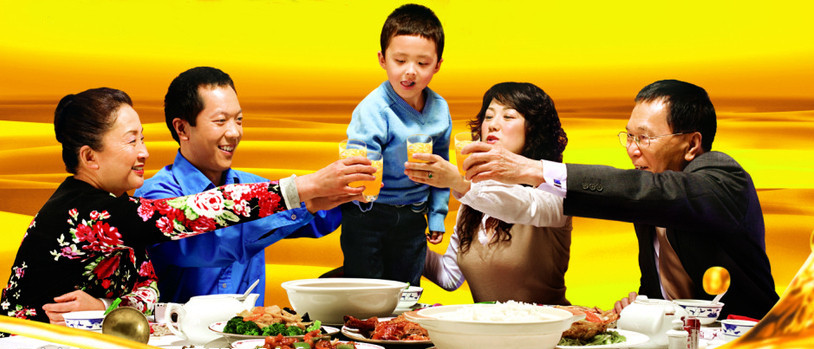
蒸年糕 making niángāo/Chinese New Year cake
年糕 (glutinous rice cake eaten to celebrate the Chinese New Year)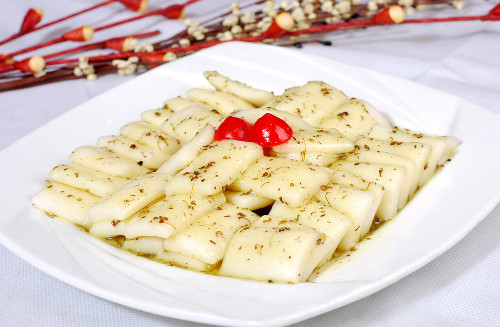
包饺子 : making dumplings
吃饺子 : eating dumplings
饺子 : dumplings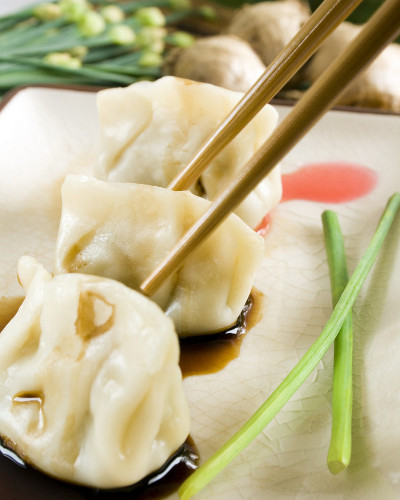
By dumplings (饺子 in Chinese), we mean "family reunion, joy, and happiness," as the character jiao is homonymous with "meeting."
春节联欢晚会 : traditional variety show presented on television in celebration of the Chinese New Year/Spring Festival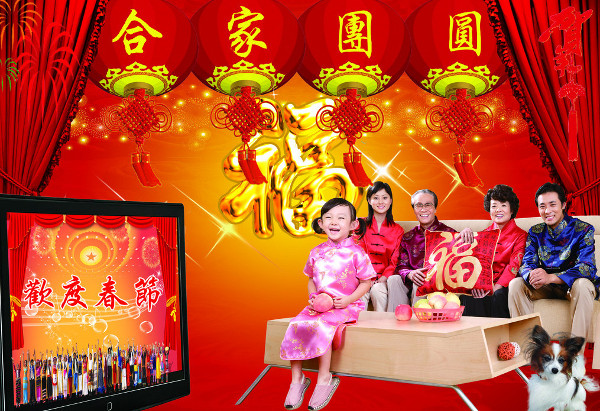
放爆竹 : setting off firecrackers to scare away Nian, a legendary ferocious animal from ancient times. The house door was painted red and a fire was lit in front before Nian's intrusion. Moreover, villagers struck objects to make a deafening noise. Thus, the beast dared not enter the village. According to this tradition, Chinese people today still set off firecrackers during the Spring Festival.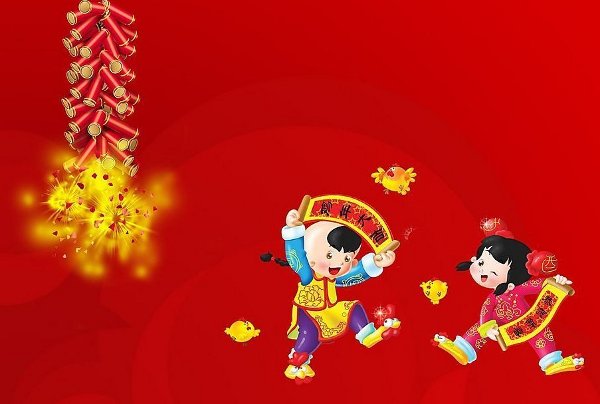
新年撞钟 : ringing the bells of the Chinese New Year to announce the new year.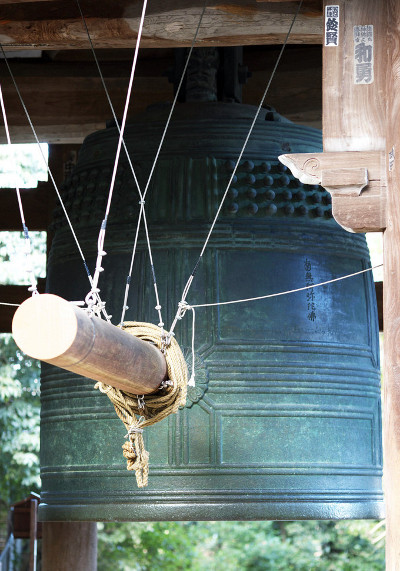
守岁 Chinese New Year's Eve vigil
The First Day of the Year
年初一 First day of the first month of the lunar calendar
拜年 : exchanging greetings.
According to Chinese tradition, exchanging greetings on the occasion of the Chinese New Year brings good luck. The tradition is to exchange greetings on the occasion of the Spring Festival to enjoy happiness throughout the year.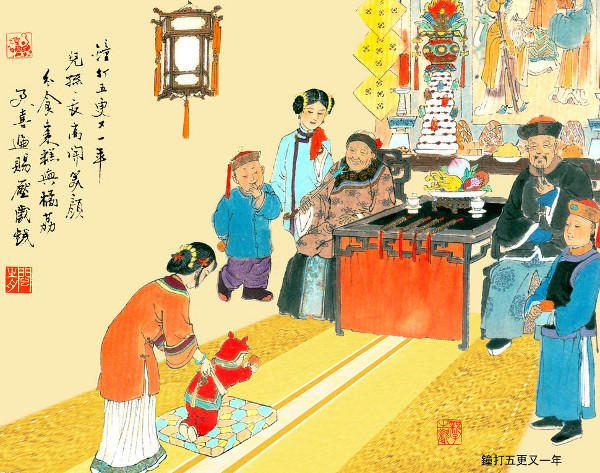
走亲戚 : visits to relatives; visiting parents and close ones
压岁钱 : red envelope (money gift placed in a red envelope given as a New Year's gift to children on the occasion of the Chinese New Year)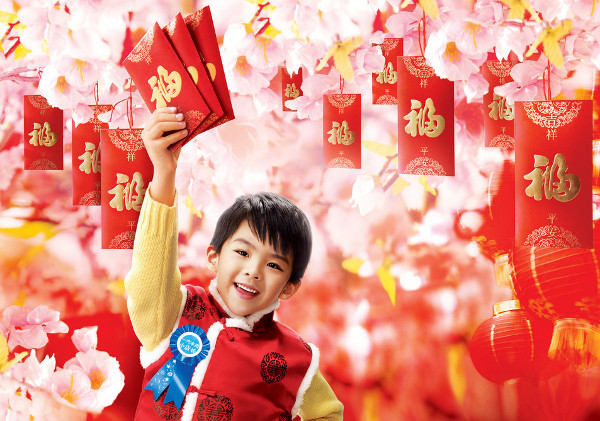
新年贺词 : Chinese New Year message
Greeting phrases:
Happy New Year! 新年快乐! 春节快乐!
Success and prosperity! 恭喜发财!
Good luck and happiness! 好运常在! 心想事成! 万事大吉!
Good health! 身体健康!
The Fifth Day of the Year
迎财神 : welcoming the God of Fortune/Wealth/Prosperity
财神 : God of Fortune/Wealth/Prosperity; God of Abundance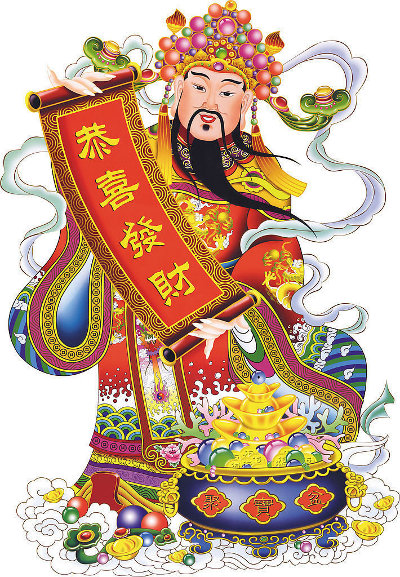
Fifteen days after the New Year (15th day of the 1st lunar month): The Lantern Festival
